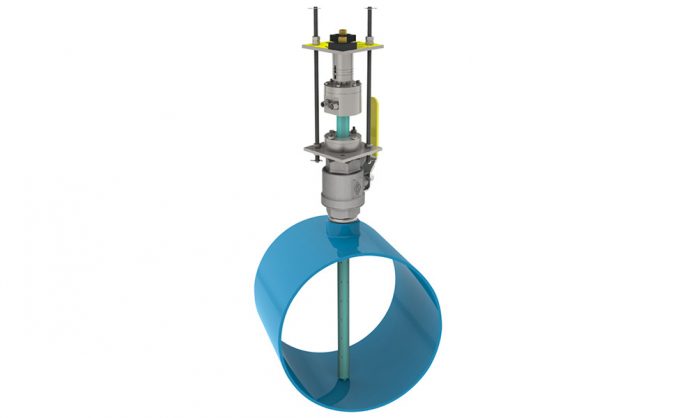What can we do to prevent water loss?
The availability of fresh water supply is a growing worldwide concern. People are more informed about the need to conserve. Current technology combined with knowledge that there is a worldwide water shortage issue is paving the path for improving our behaviours and processes.
With awareness and conservation as a key focus, some topics of discussion that emerge are non-revenue water loss and leak detection. Non-revenue water is essentially water treated for distribution that does not make it through the billing cycle. One source of non-revenue water is losses throughout a municipal distribution system because of damaged piping.
As our piping and distribution infrastructure continue to age, the need for maintenance and system improvements are becoming more apparent. There is a greater need to do as much as we can to manage and prevent leaks within our distribution systems while keeping costs at a minimum. Although there are many ways to conserve water and many alternative technologies available for leak detection, the focus of this article is to share knowledge about the use of a flow meter as a tool for identifying, detecting, and monitoring quantities of physical non-revenue water within a distribution system.
Using a Flow Meter – A Tool for Finding Non-Revenue Water
A flow meter, as a tool for leakage monitoring, assists with leak detection processes by narrowing down or localizing the area in which a leak may exist. Electromagnetic flow meters have been a common tool used by municipalities in traditional locations and applications. There is an unrealized opportunity to understand non-revenue water by expanding flow meter usage to include new measuring points. Flow meters are useful for measuring the content of raw ground or surface water that flows into a water treatment plant. They also can measure the flow of the produced treated water delivered to the distribution system. What some may not be aware of, is that the data provided by flow meters is an asset that utilities can use to drive down water loss.
What is the Next Generation Mag Meter?
The FPI Mag meter represents the next generation of development of magnetic flow meter technology and employs a unique and ground-breaking configuration whereby the coils and electrodes are assembled in a tube that inserts into a pipe perpendicular to the full flow profile of the pipe. The advantages of this configuration are numerous in a wide variety of applications. In fit and form the FPI Mag is unique; in function the FPI Mag meter is just that – a mag meter.
The important point here is that the FPI Mag is unique. There is nothing on the market comparable to this patented technology. The FPI Mag is comparable to a full-bore mag in terms of specifications. The FPI Mag achieves this by measuring flow at various points within the pipe diameter. With an excellent accuracy rating of ± 0.5% from 1 ft/s to 32 ft/s (0.3 m/s to 10 m/s), and ±1% from 0.3 ft/s to 1 ft/s (0.1 m/s to 0.3 m/s) of reading, but the differentiator is that FPI Mag can be installed under pressure!
The FPI Mag uses a multi-electrode sensor design that measures flow across the entire pipe diameter and exemplifies the robustness, rangeability, and accuracy rating of a full-bore mag meter while providing the ability to install and remove the meter under pressure by its hot tap installation method.
The ability for a utility to install and remove the FPI Mag under pressure means significant cost savings and provides greater budget flexibility. If the FPI Mag is being installed for the first time, a cost saving of up to 45% will result from not needing to shut the service processes down during installation, as well as a reduction in manpower, materials, and equipment. Additionally, flanges are not required, pipes do not have to be cut and welding is generally unnecessary. This makes installation simple and easy; ideal for retrofits, upgrades and maintenance projects as well as sites never metered before.
Significant future savings also result because the meter can be removed under pressure. What does this mean for the utility? It means that without interrupting service, a plant operator can easily take the meter out of line should it be required for inspection, cleaning or for calibration if mandated by a state regulatory authority.
The Ideal Solution for Leakage Monitoring
Using flow meters for monitoring and leak detection begins with understanding the ground or surface water quantity drawn from the intake source.
Measure and record the flow at each location.
By positioning the FPI Mag in multiple locations throughout the treatment or distribution system, the flow of water is measured as it passes through each of these processes. Analysis and tracking can be documented showing the percent of loss between each location as the water passes. A higher than expected percent of loss or a significant change in the percent of loss over time can indicate that there is a leak within the zone or district being monitored. Pump stations are another example of a good measuring location. Equipment such as a pumps can need repair, including seal replacement, which may result in leaking equipment.
Davidson Water Case Study
One of our valued customers, Davidson Water in Lexington, NC, uses the FPI Mag in various plant locations to track non-revenue water loss. As quoted from the Davidson Water Case Study, Dale Draughn concludes, “The FPI Mag flow meters are allowing us to pinpoint pressure zones with issues. Once we know we have an issue, we can break it into subzones and start a rapid street-by-street investigation…The obvious benefit is a drop in production cost. But this also serves to support the utility’s commitment to water conservation and resource preservation.” The ability for Davidson Water to understand where the losses are occurring at various points within the county including water leaving the plant, rural water towers and booster stations have made a significant impact on their bottom line.
Conclusion
In addition to leak detection and monitoring, flow meters have another benefit; they add a level of trust for consumers. Flow meters hold the service provider accountable for the actual water being produced. Comparing the produced finished water with the billed usage sets a standard for tracking; differences can be attributed to non-revenue water loss. By using a flow meter to quantify the percent of non-revenue water within the water treatment plant, utilities can localize leaks, identify opportunities to improve or repair the infrastructure within the plant, and eventually reduce the quantity of non-revenue water losses. These efforts will assist with preservation of our water resources while improving profitability for the utility.




